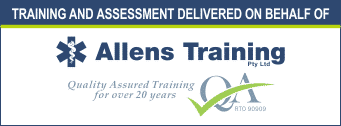The 5 most common first aid incidents in childcare and how to manage and prevent them
The 5 most common first aid incidents in childcare — and how to manage and prevent them!
Those that look after children know that, quite literally, anything can happen at any time, any where! But there are a few injuries and illnesses that you will face on an almost daily basis. These are the 5 most common first aid incidents that occur with children and how you should manage them.
A career in childcare can be hugely rewarding, but it also comes with many big responsibilities. Parents and guardians entrust their children’s safety to people who work in a childcare setting, so ensuring that health and safety is always handled with care is paramount.
There are a few particularly common incidents that childcare providers frequently face when looking after the children in their charge. But many of these incidents can be prevented with clever forward planning and the right training.
An industry-specific first aid course for childcare like HLTAID012 Provide First Aid in an Education and Care Setting, provides the first aid knowledge and skills that childcare workers need, plus meet their first aid training certification requirements including asthma and anaphylaxis. However, requirements may differ slightly between employers.
Small cuts and grazes
Children play and run and sometimes they fall and hurt themselves. Working in childcare, it’s inevitable that there will occasionally be small cuts and grazes to deal with.
While children often find these very distressing – and painful – the cut should be washed, treated with an antibiotic cream to avoid infection, and then covered with a sterile bandage or plaster to prevent germs or dirt from getting in.
If the bleeding or injury is extreme, then contact a medical professional for advice on the next steps or ring emergency services. While cuts of this kind are very common, many of them can be prevented by encouraging children to take their time when walking and to be careful during playtime.
Bruises
Just like small cuts, bruises are another common occurrence in childcare settings, but they can also be avoided by encouraging more cautious movement. When they do happen, bruises can be lessened by applying cold packs.
If a child gets a bruise to the head, this should be taken more seriously. Workplace policies and procedures should include performing a concussion assessment, notifying a parent or guardian and may require urgent medical treatment.
For concussion assessment, there is some great resources around like the Headcheck App, recommended on the Australian Government’s Health Direct website.
Allergies
Many children, like some adults, suffer from mild to severe allergies to various materials and organic materials, as well as food. The childcare setting should be informed of these allergies by parents, so they can ensure precautions are taken to help prevent extreme allergic reactions.
Educators and carers should familiarise themselves with allergy action plans for each child under their care who has known allergies, and receive regular adrenaline auto-injector training, like that provided in our Childcare first aid course Brisbane.
Nosebleeds
Nosebleeds are incredibly common occurrences in children. Unless caused by a head injury, a nosebleed is not usually a sign of any underlying problem, but they can be unnerving for the child going through it.
To help stop the bleeding, ask the child to tilt their head slightly forward (not back!) and apply gentle pressure to the sides of the nostrils.
If the bleeding doesn’t stop after 5 to 10 minutes, then seek additional medical advice.
Sprains and fractures
Sprains and fractures can easily occur in children and are usually very painful, although the severity of the injury should be determined by the impact of the incident, not by pain alone.
If the child cannot bare weight on the injury or had limited movement, they should be referred for immediate medical assessment.
To minimise the risk of sprains and strains occurring, childcare services should assess and manage slipping and tripping hazards, give adequate space for active play and debrief when injuries do occur, identifying any risks that can be addressed to minimise the likelihood of a similar incident occurring again.
First aid kits for childcare
A well-stocked and maintained first aid kit is essential for the childcare setting, as accidents happen regardless of how well-prepared you are.
Its contents should be based on workplace requirements for the education and care setting, as well as a risk assessment of the specific workplace environment.
Depending on the size of the facility, multiple kits may be required to ensure prompt access to supplies. An additional portable kit is also needed for outings or excursions with children.



